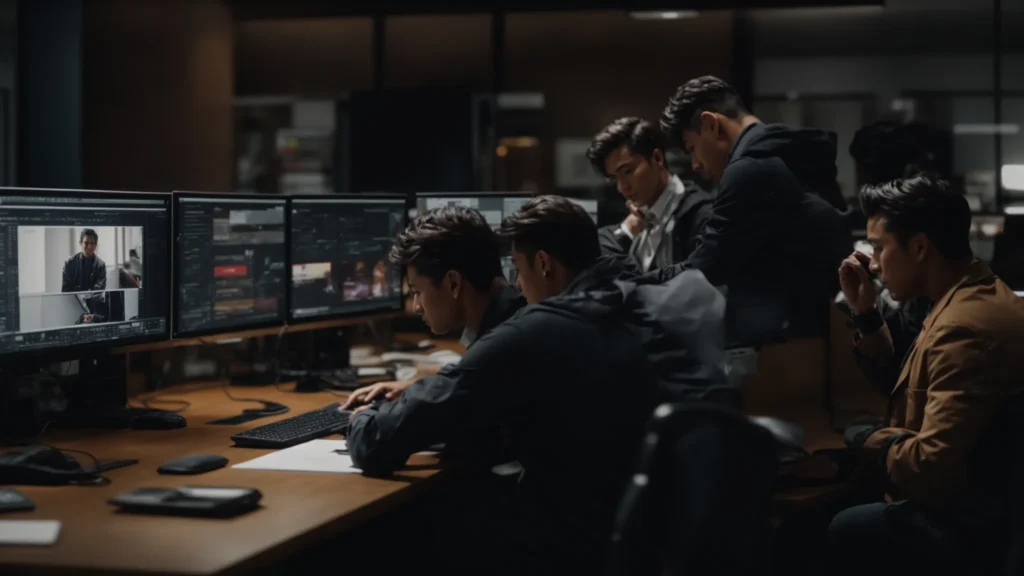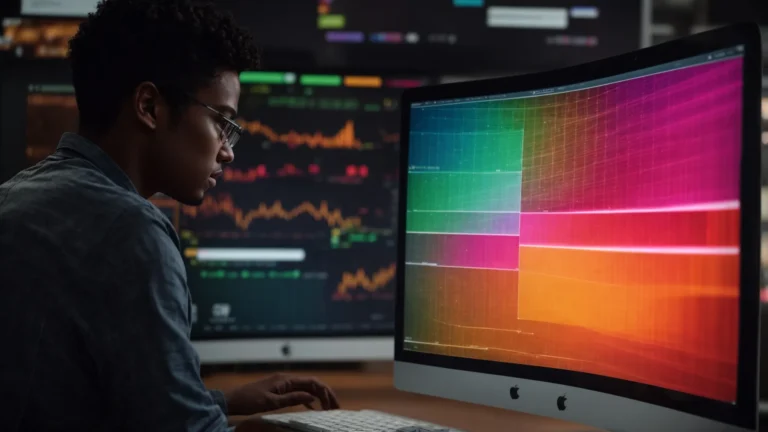Strategies for Effective Logo Placement in Video Content for Enhanced Brand Recognition
In the bustling digital marketplace, a powerful logo imprinted into the minds of consumers can be the difference between a business that thrives and one that’s simply overlooked.
Photos, music, and subtitles aren’t the only stars in the production; the strategic integration of a logo plays a pivotal role in establishing a brand’s presence within a video.
Whether through social media campaigns or promotional adverts, the right logo placement can amplify visibility and foster brand recognition.
As a social media video creator, seizing these moments can create a lasting impact not only on the screen but in the memory of the target audience.
Keep reading to explore the art of logo placement that ensures your brand remains the hero in every frame.
Key Takeaways
- Strategic Logo Placement in Video Content Enhances Brand Visibility and Recall
- Consistent Branding With Lower Thirds Templates Maintains a Cohesive Identity
- Color Choice and Logo Size Adaptation Are Crucial for Visibility Across Varied Backgrounds
- The Right Logo File Format Ensures High-Quality Visuals and Broad Compatibility
- Data-Driven Adjustments to Logo Size and Placement Can Improve Viewer Engagement
1. Nail Your Intro and Outro
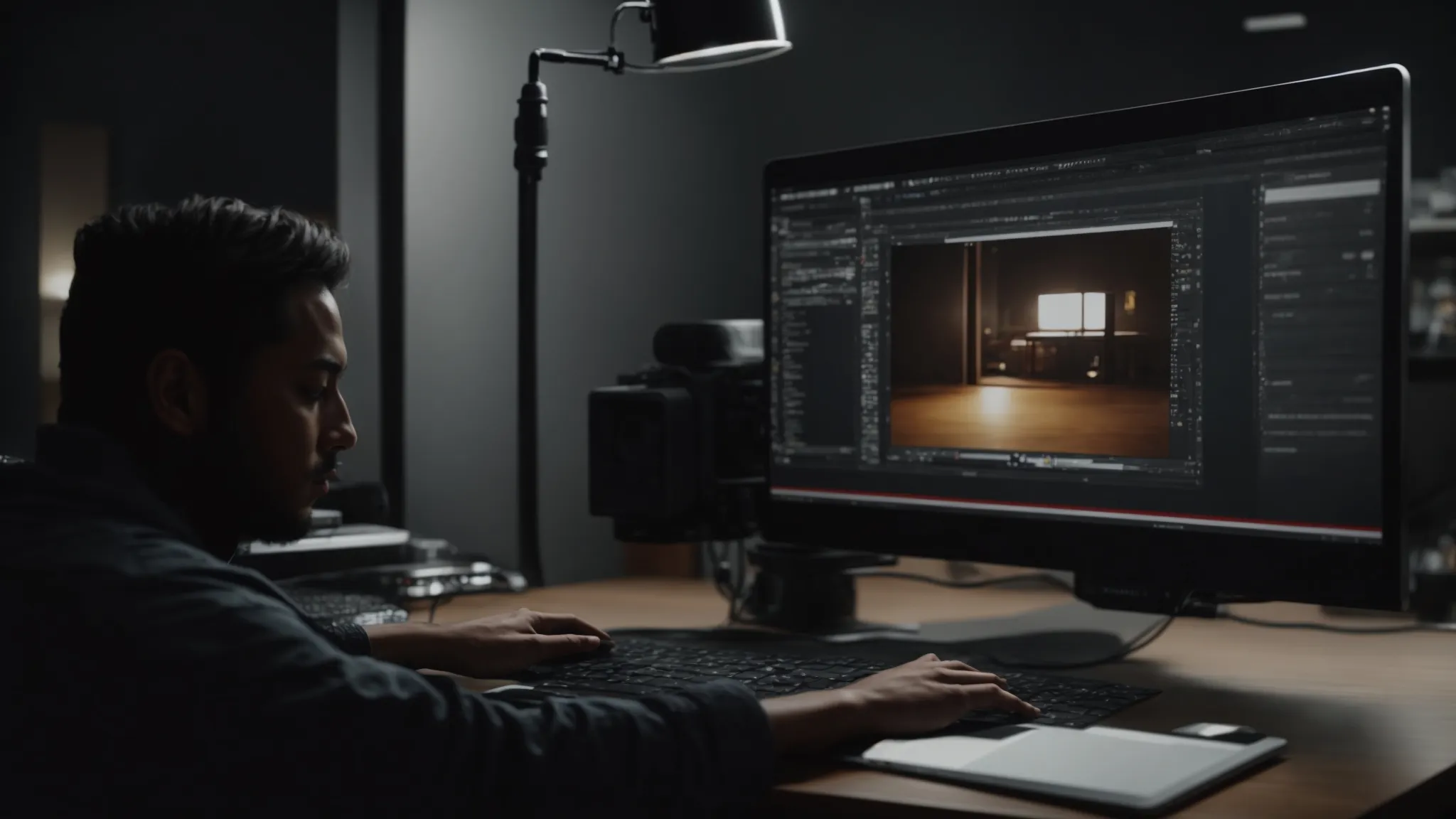
In the dynamic terrain of digital marketing, capturing the essence of a brand within the blink-and-you-miss-it span of a social media video creator‘s output is a challenge that requires finesse and strategic planning.
Fashioning an indelible mark in the viewers’ minds begins with the deft integration of the brand logo into the video content.
As such, tactful placement of your mark not only during the intro but also as a watermark that persists throughout the viewing experience, assures a constant, subtle brand presence.
Equally critical is the exit strategy—the outro—where reinforcing your logo ensures it’s the lingering image as the screen fades to black.
In the ensuing discussion, we explore the nuances of embedding a logo within the engaging introductory frames, leveraging lower thirds templates for brand consistency, and cementing brand recall with a thoughtfully designed outro.
Watermark- Logo Throughout the Video
Within the world of video marketing, where every pixel on the screen can convey meaning and purpose, a watermark comprising the brand logo serves as an omnipresent envoy of corporate identity. Strategically, it must occupy a sweet spot—visible without obstructing crucial content, maintaining legibility against varying backgrounds, and enhancing rather than detracting from the viewer’s experience. This method not merely preserves the integrity of the branded message, but it also counters unauthorized use, upholding the sanctity of the brand’s intellectual property.
| Frame | Watermark Visibility | Content Integration | Background Variation |
|---|---|---|---|
| Intro | High | Seamless animation with intro theme | Diverse to test visibility |
| Main Content | Medium | Subtle presence around key visuals | Variable, adjusts to maintain logo clarity |
| Outro | High | Incorporated into closing call to action | Consistent to anchor visual branding |
The Logo as Part of an Engaging Intro
An engaging intro acts as a critical handshake between the brand and its target audience, setting the stage for the narrative that unfolds. A logo, when creatively integrated into this segment, can lay a strong foundation for brand recognition, sparking interest and forging a visual connection with the consumer right from the offset. Hence, an intro that features the logo in a captivating manner – think a sleek entry with a twist of animation or aligning it with the rhythm of a music video’s beat – can immensely boost a viewer’s recall and affinity towards the brand.
| Component | Engagement Strategy | Brand Recall Impact | Intro Design Element |
|---|---|---|---|
| Brand Logo Integration | Align with music video’s rhythm | High | Animation Twists |
| Visual Connection | Captivating Entry | Medium | Sleek Logo Appearance |
| Consumer Affinity | Rhythmic Alignment | Medium | Synchronized Graphics |
The Logo With Branded Lower Thirds Templates
Lower thirds templates act as a vessel for consistent branding, allowing the inclusion of a logo to maintain a professional and cohesive brand identity throughout the video. By employing these templates, a social media video creator can ensure the brand’s logo is tactically highlighted in a non-intrusive way, appearing in the lower section of the screen, thus not detracting from the primary content while simultaneously bolstering brand visibility and recognition.
| Video Segment | Lower Thirds Design | Logo Visibility | Brand Consistency |
|---|---|---|---|
| Interviews | Subtle and Complementary | Moderate | Cohesive with Brand Aesthetic |
| Tutorials | Informative with Clear Typography | Consistent | Template Aligned with Brand Palette |
| Product Reviews | Dynamic and Engaging | Strategic | Seamlessly Integrated |
The Logo as Part of the Outro
The concluding moments of a video possess a potent chance to anchor the brand identity in the memory of the audience: an outro enriched with a logo effortlessly brings the narrative full circle. By employing a visual echo of the introduction, the brand logo re-emerges with prominence at the end, synergizing with a call to action that spurs the viewer towards engagement. This final display cements the logo’s presence, reinforcing brand recognition and ensuring it occupies a lasting spot in the viewer’s mind.
- Embed the logo prominently to make the last visual impression.
- Pair the logo with a compelling call to action that prompts viewer response.
- Use animation to underscore the logo and bolster brand recall as the video concludes.
Crafting the perfect intro and outro sets the stage, but now it’s time to captivate. Let’s dive into the art of precision and discover where each frame can make the most impact.
2. Be Precise About Placement

The strategic placement of a logo in video content is not a matter of chance but a calculated approach to capturing and retaining viewer attention.
By meticulously assessing viewer attention hotspots, brand stewards can determine the most impactful positions for their brand logo, ensuring it’s seen without overwhelming the main message.
Equally important is the need to adapt logo visibility for different segments of the video, ensuring a consistent presence that resonates across varied content.
Moreover, a thorough understanding of screen space allows creators to avoid areas cluttered with activity, where logos might be competing against a barrage of visual information.
Each of these steps plays a vital role in optimizing the brand logo for maximum recognition and retention without distracting from the video’s primary content.
Assessing Viewer Attention Hotspots for Logo Placement
In the intricacies of video campaigns, discerning where a viewer’s gaze naturally gravitates is key to effective logo placement. Social media video creators often utilize heat maps generated from eye-tracking studies to pinpoint these areas, ensuring that logos are strategically positioned to garner attention without intruding on the video’s core message. This insight guides creators in making informed decisions about where to embed the logo for optimal visibility and brand assimilation within the viewer’s consciousness.
Strategizing Logo Visibility Throughout Different Video Segments
In the evolving tableau of video content, tactful differentiation in logo visibility across different segments is essential for maintaining viewer engagement while reinforcing brand presence. The social media video creator must experiment with the logo’s prominence, ensuring it adaply adjusts from a commanding focal point in the opening scenes to a subtle companion during informational or plot-driven sequences, thereby preserving the logo’s integrity as a beacon of the brand without sacrificing narrative quality.
Avoiding Logo Placement in Distractingly Busy Areas
Masterful logo placement necessitates avoiding areas of the video fraught with competing visual elements. In scenarios where the screen is abuzz with intricate graphics or text, subtlety is paramount: a logo must find refuge in the tranquility of less cluttered corners or pauses in the action, guaranteeing its visibility and effectiveness as a brand ambassador. Recognizing and navigating these busy spaces ensures that the logo stands out as a cornerstone of brand identity, rather than being lost in a sea of distractions.
- Identify quiet zones within the video that offer a respite from the bustling activity.
- Strategize logo placement during transitional moments or still frames to enhance visibility.
- Utilize the periphery for smaller, subtle logo appearances that don’t compete with central action.
The placement of your design isn’t just a detail; it’s the map that guides the consumer’s eye. Now, let’s zero in on the scale – ensuring your image makes an impact without overwhelming the space.
3. Choose the Right Size
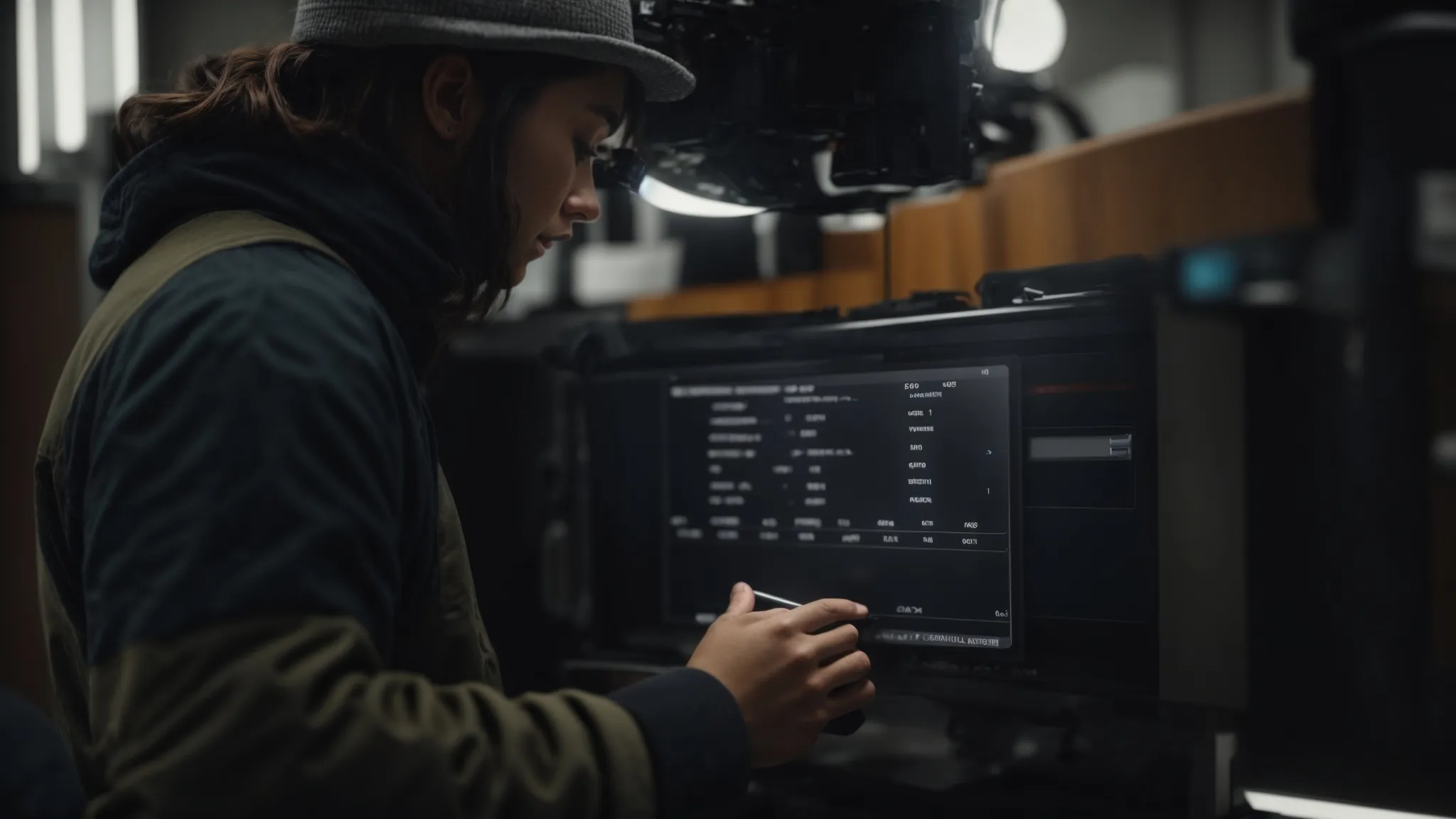
Choosing the optimal size for a brand logo in video content is both an art and a science.
It’s essential to strike an impeccable balance, ensuring the logo is large enough to be noticed without overshadowing the video’s message or storytelling.
The variation of screen sizes and platform specifications adds layers to this decision-making process, necessitating tailored adjustments to logo dimensions that cater to various devices and social networks where the video might be showcased.
Furthermore, delving into performance analytics provides invaluable insights, enabling brands to iterate and refine the scale of their logo for maximum engagement and brand recall.
The forthcoming topics chart the territory of logo size optimization, from balancing visibility with content integrity to platform-specific considerations and data-driven adjustments.
Balancing Logo Size for Visibility Without Overpowering Content
Striking the delicate balance between logo visibility and content integrity is an exercise in restraint and strategic design. A logo should be large enough to imprint the brand’s identity in the minds of the audience, yet restrained to avoid overshadowing the narrative or message of the content it adorns.
- Assess the visual impact of the logo at various sizes against the content backdrop.
- Employ moderation to ensure the logo compliments rather than competes with the video content.
- Optimize logo dimensions based on platform specifications and viewing formats.
Adjusting Logo Size Based on Video Platform and Device
In an era where the internet is accessed via a mosaic of gadgets, from smartphones to colossal desktop monitors, adapting the size of a brand’s logo to suit different video platforms and devices is essential for maintaining its prominence and readability. Acknowledging that each social media network has its own preferred specifications, and that individual devices display content distinctively, social media video creators must be agile, resizing logos to ensure optimal performance and maximum impact across all viewing environments.
Using Analytics to Refine Logo Size for Better Engagement
Refining logo size for better engagement is where analytics come into their own, offering a treasure of data that brands can exploit. By meticulously evaluating user interaction data, such as click-through rates and engagement times, brands can iteratively adjust the logo’s scale to meet the sweet spot that maximizes visibility without deterring from the core message: A data-driven approach is indispensable for fine-tuning logo prominence in a way that conjugates harmoniously with enhanced viewer engagement.
| Data Metric | Measurement Focus | Impact on Logo Size | Viewer Engagement Improvement |
|---|---|---|---|
| Click-through Rate (CTR) | Clicks on logo-involved areas | Adjust size for increased clicks | Higher user-initiated interaction |
| Engagement Time | Duration of logo exposure | Modify scale to retain attention | Extended brand exposure |
| Video Completion Rate | Completion of videos with logo | Fine-tune size for full-viewing | Greater brand association recall |
| Bounce Rate | Early exits from logo-bearing content | Downscale logo for content focus | Increased content consumption |
Now that the dimensions have been set, the adventure into color beckons. Let’s plunge into the captivating world of tints and shades to truly bring your design to life!
4. Consider Tints and Shades
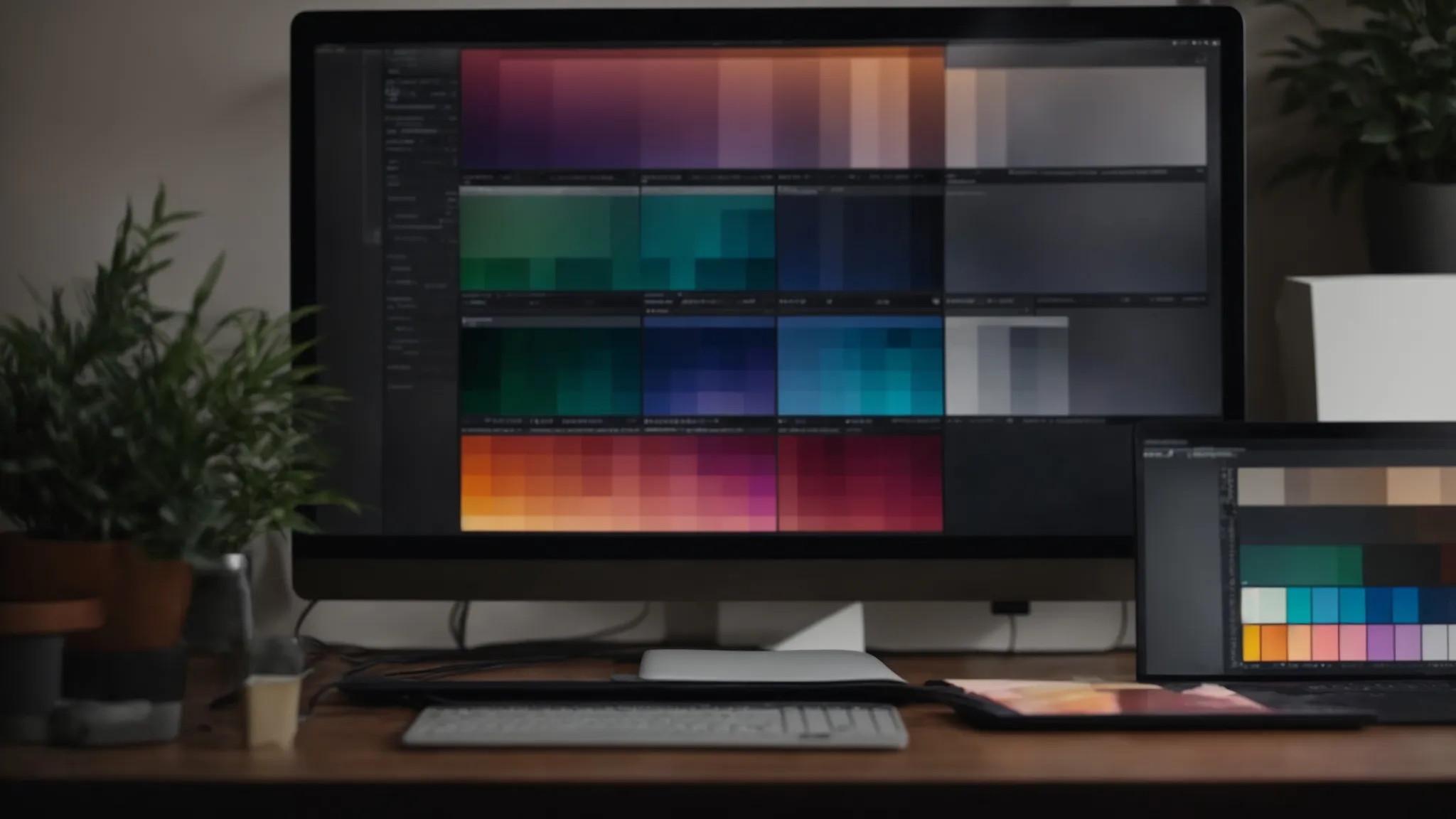
The judicious selection and application of colors in a brand’s logo can significantly influence its visibility and memorability within video content.
As the visual ambassador of the brand, the logo must be optimized to retain its integrity across a diverse range of video backgrounds and scenes.
Consequently, brands must carefully select colors that both complement the video content and ensure the logo stands out, irrespective of the visual landscape it inhabits.
This attention to the intricacies of color psychology and aesthetics is pivotal in formulating a consistent and recognizable logo color scheme that bolsters brand identity and fosters audience recognition.
Selecting Colors for Logo to Complement Video Content
Opting for colors that harmonize with the video environment ensures that a logo does not dissolve into the background but rather pops with sufficient contrast, compelling immediate connection with the viewer. This choice involves not just an aesthetic commitment but also an understanding of how particular hues perform across various digital displays, fostering a brand’s persona through a logo that remains vivid and memorable even amidst the most vibrant or subdued of scenes.
Adjusting Logo Color for Visibility Against Varied Backgrounds
Mastering the art of logo color adjustment against varied backgrounds is crucial for ensuring it maintains visibility throughout the video content. This practice entails an in-depth comprehension of contrasting hues and the judicious application of tints and shades to enhance the logo’s presence against different video scenes: a skill that both accentuates the brand identity and safeguards its recognition, irrespective of the underlying visual canvas.
| Video Scene Type | Background Color | Logo Color Adjustment | Visibility Outcome |
|---|---|---|---|
| Bright/Harsh Lighting | Light Tones | Apply Darker Shades | Increased Contrast, Enhanced Presence |
| Darker/Dim Lighting | Dark Tones | Apply Lighter Tints | Stands Out Against Obscure Backdrop |
| Varied/Complex Scenes | Mixed Patterns or Colors | Opt for Neutral or Complementary Hues | Maintains Integrity Without Blending In |
| Monochromatic Scenes | Singular Color Palette | Choose Contrasting Color Immediate Pop | Striking Distinction, Memorable Impact |
Enhancing Brand Recognition With Consistent Logo Color Schemes
Employing a consistent logo color scheme is an instrumental facet of crafting a recognizable brand identity within video content. By leveraging color consistency across all marketing materials, businesses solidify their image within the consumer’s mind, thereby augmenting brand loyalty and recall. This consistency in logo design enables audiences to associate specific color palettes with a brand regardless of the video’s narrative context, fostering an innate recognition that boosts the brand’s stature and consumer trust.
Mastering the nuances of color is just one piece of the puzzle. Next, let’s ensure your visual masterpiece remains intact by selecting the ideal file format.
5. Use the Right File Format

In the quest to cement a brand’s image in the collective memory of its audience, the clarity and quality of a logo in video content cannot be overstated.
Selecting the appropriate logo file format is a pivotal step that ensures the iconography of a brand is displayed with utmost precision and vibrancy, fostering instant recognition and connection.
As social media video creators navigate the panorama of various online platforms and the attendant complexities of varying hardware capabilities, the objective remains unequivocal: to choose a logo format that maintains high-quality visuals, attains seamless compatibility, and optimizes file size for swift loading, thereby preserving the integrity—and bolstering the impact—of the brand’s emblematic presence.
Choosing High-Quality Logo Formats for Crisp Visuals
In the pursuit of excellence in digital marketing, selecting a high-quality logo file format is like choosing the sharpest tool for the clearest cut: it is fundamental. The right format ensures crisp, pixel-perfect representation of a brand’s logo, allowing it to stand out with clarity and vibrant colors, regardless of the device or platform on which the video is viewed.
| File Format | Quality | Compatibility | Size |
|---|---|---|---|
| PNG | High (supports transparency) | Wide (web and mobile devices) | Medium (lossless compression) |
| JPEG | Medium (lossy compression) | Wide (universal support) | Variable (adjustable quality) |
| SVG | High (vector format) | Good (modern browsers and apps) | Small (scalable without quality loss) |
| GIF | Low (limited colors) | Wide (web and mobile devices) | Small (simpler images) |
Ensuring Logo Format Compatibility Across Different Video Platforms
Ensuring that a brand logo maintains its visual integrity across diverse video platforms necessitates the use of a file format that offers broad compatibility. Social media video creators must therefore select a format that renders the logo flawlessly on various services, from the compressed space of mobile apps to the expansive canvases of web browsers, safeguarding the logo’s detail and vibrancy amidst the multiplicity of user interfaces and video compression algorithms.
Optimizing Logo File Size for Faster Loading Without Losing Quality
In a landscape where immediacy is key, a social media video creator must strike a delicate balance between logo file size and quality to ensure rapid loading times and high-definition clarity. By optimizing logos using the right file formats, a brand’s emblem remains sharp and distinct, even as it loads swiftly to meet the rapid pace of online video consumption. Markets, saturated with content vying for consumer attention, reward those who optimize logos to display immediately, without a pixel out of place.
| Consideration Factor | Optimization Technique | Quality Outcome | Loading Efficiency |
|---|---|---|---|
| File Format Selection | Use formats like PNG for transparency and quality. | Preserved logo crispness and color integrity. | Images load without delay, enhancing user experience. |
| File Size Management | Compress without compromising essential details. | Retains high-quality visual appeal. | Increases website’s speed, reducing bounce rates. |
| Format-specific Features | Capitalize on vector formats like SVG for scalability. | Flawless quality across all screen sizes. | Quick rendering mitigates loading lags. |
| Resolution Adjustment | Adapt resolution based on intended device or platform. | Optimal display quality for platform specifications. | Ensures compatibility and brisk appearance on all devices. |
Conclusion
Effective logo placement is a calculated strategy that significantly boosts brand recognition when executed with precision in social media video content.
Through discerning use of positions, sizes, and colors, the logo can make a subtle yet impactful imprint on the viewer’s memory, ensuring consistent visibility without detraking from the video’s message.
Choosing the right file format is critical, as it guarantees that the logo is displayed at its highest quality, facilitating rapid loading and maintaining visual integrity across various platforms.
Ultimately, these practices solidify a brand’s image in the consumer’s consciousness, fostering recognition and trust that are vital in today’s competitive market.

